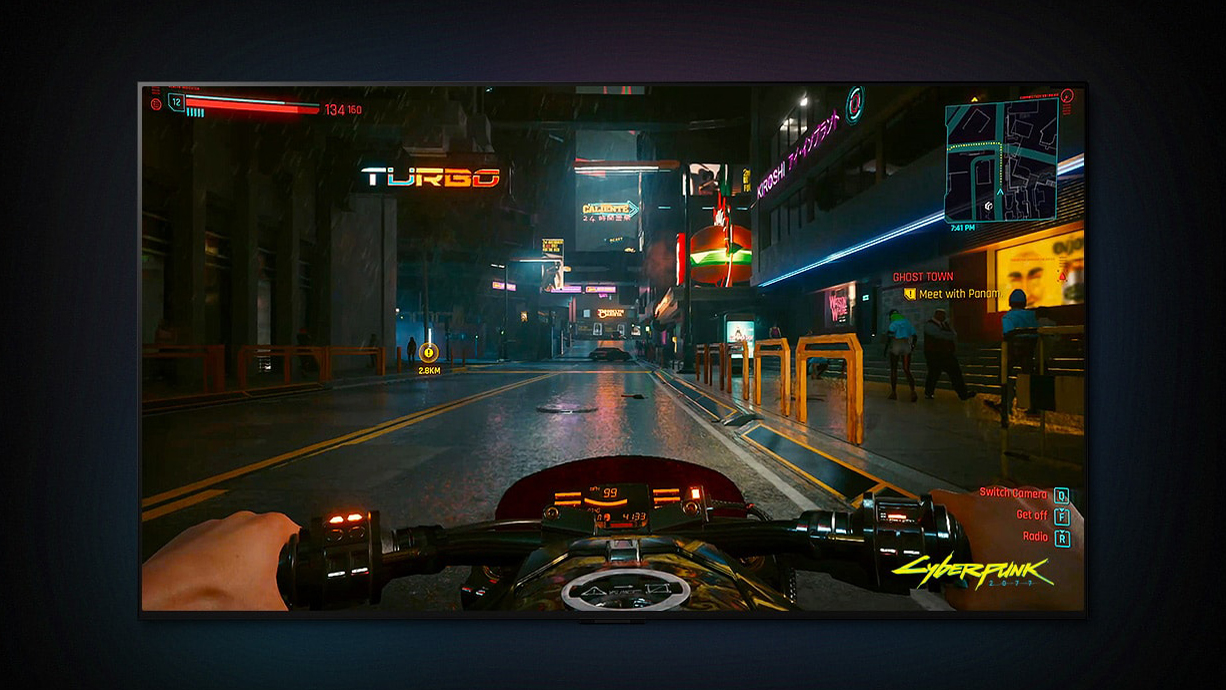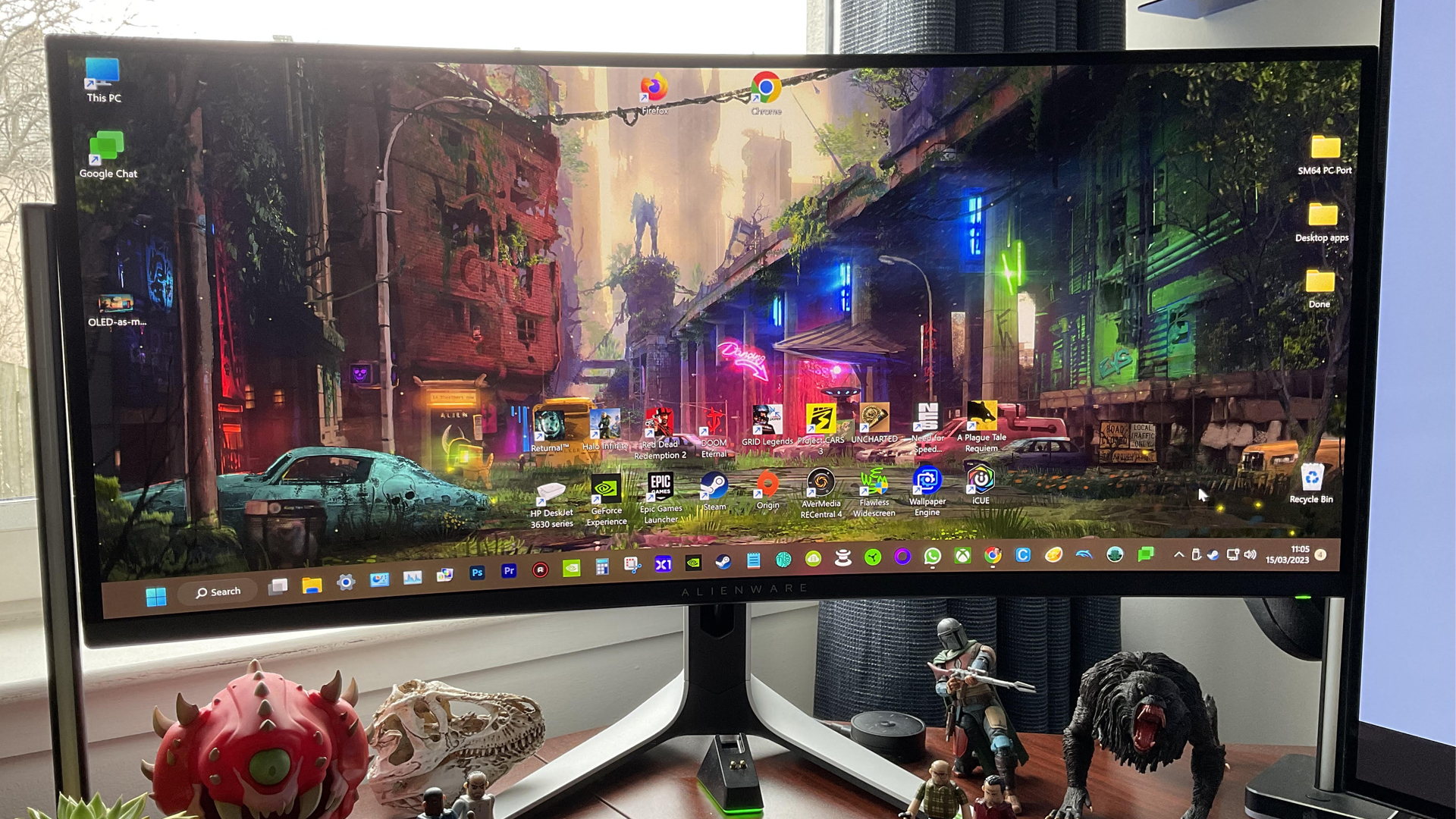After years of owning OLED TVs, I've finally stopped worrying about burn-in
Things have moved on so far that even as an image obsessive, I don't think it's a problem any more

Burn-in has long been the ultimate boogeyman for OLED TV owners. Sometimes known as image retention, OLED burn-in can occur if you leave a static image on your display for hours at a time, and OLED is the television tech that’s most susceptible to this problem. As someone who’s exclusively owned OLED TVs for the past eight years, I should be worried, right?
There was a time I absolutely was. Hell, I used to be petrified about the threat of burn-in. The notion that having splashed one on of the best OLED TVs, it could be forever marred by the permanent outline of a static symbol – say the on-screen scoreboard of a soccer match or a health bar in a video game – would leave me trembling at the knees. But that’s all changed now.
The main reason my burn-in paranoia can get in the sea is down to manufacturers introducing features that make it far less of a risk. Example? Almost every major brand of OLED TV has a screen saver that kicks in after a period of inactivity. Throw in further fixes like ‘Screen Shift’ – a feature that subtly moves on-screen action by tiny, imperceptible amounts – and my fear of static symbols is nowhere near as pronounced as it used to be.
Burn-in after reading
Make no mistake, I’ve put several OLED TVs under serious risk of burn-in down the years. Hundreds of hours spent wasting Los Santos citizens in GTA 5, all while a permanent map of the city lurks in the bottom-right corner of my screen. Pausing an episode of Happy Valley on BBC iPlayer, then leaving poor Sergeant Cawood suspended in time while I take my husky for an epic walk. Test match cricket marathons where the on-screen score was a constant looming threat for what felt like a vertebral ice age.
And my personal favorite, falling asleep while watching a Blu-ray disc, then waking up to find the title menu had probably been plastered on my TV for upwards of five hours. How a silhouette of Jon Snow’s know-nothing face isn’t permanently etched into my LG C2 OLED after regular Game of Thrones binges, only the Lord of Light knows.

More than anything, it’s the fact I’ve been using two OLED screens as PC monitors for the best part of a year that has well and truly banished my burn-in heebie-jeebies. I use the excellent Alienware AW3423DW QD-OLED as my main monitor, and the manufacturer is so confident about image retention not becoming a problem, its ultrawide display comes with a three year burn-in warranty as standard.
This confidence feels well warranted, because in months of use, I haven’t witnessed a single instance of temporary image retention, let alone permanent burn-in. Despite often having multiple browser tabs open for hours on end, or those times when I stupidly forget to auto-hide my taskbar before a marathon video-editing session on Adobe Premiere Pro, my Alienware OLED has remained free from burn-in artefacts.
Sign up for breaking news, reviews, opinion, top tech deals, and more.
Pixel perfect
My office LG C2 OLED – yes, I embarrassingly own two of what TechRadar considers to be the best TV currently available – has also avoided any image retention woes. Although this may be partly down to the fact I still run manual pixel-cleaning cycles on it every other week, purely through force of habit.
This process checks and adjusts each on-screen pixel, takes mere minutes to run, and is the best way to avoid OLED burn-in after long spells of watching content with static symbols. As a cringeworthy aside, I actually find running pixel-cleaning cycles to be mildly therapeutic. Yes, I deserved to be judged.
The moral of this rambling assortment of anecdotes? OLED has sufficiently progressed enough as a tech to make the prospect of screen burn-in a relatively minor threat in 2023. Considering I’ve put a range of OLED displays under some pretty unreasonable stress tests down the years, if I’ve never been scarred by screen-ruining image retention, any modern OLED TV you buy isn’t likely to either.
Dave is a freelancer who's been writing about tech and video games since 2006, with bylines across GamesRadar+, Total Film, PC Gamer, and Edge. He's been obsessed with all manner of AV equipment ever since his parents first bought him a hideously garish 13-inch CRT TV (complete with built-in VCR, no less) back in 1998. Over the years he’s owned more plasma and OLED TVs than he can count. On an average day, he spends 30% of his waking existence having mild panic attacks about vertical banding and dead pixels.
